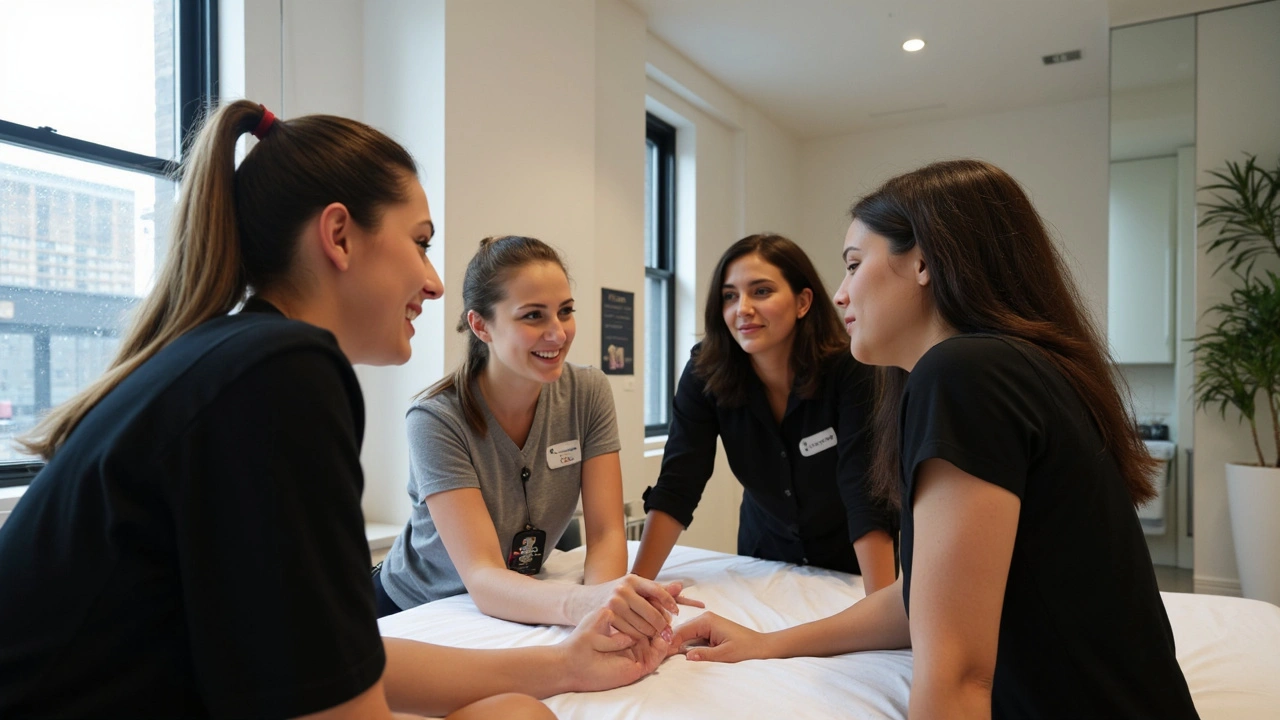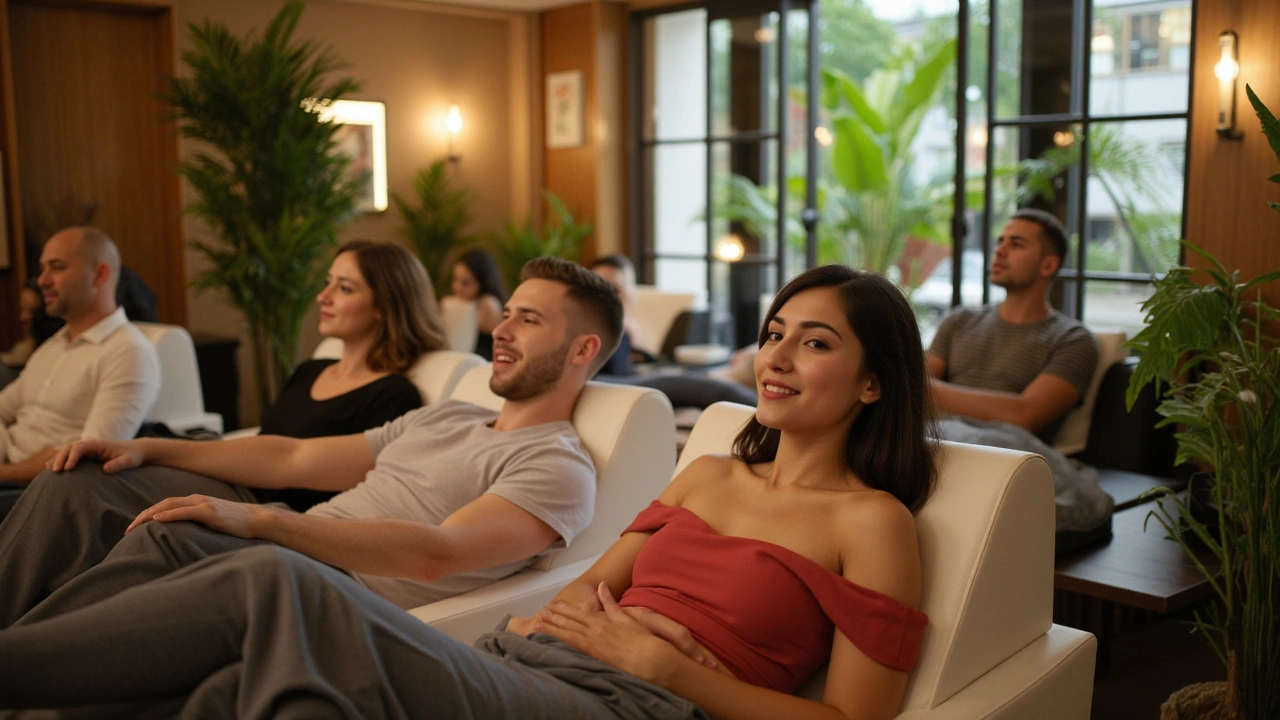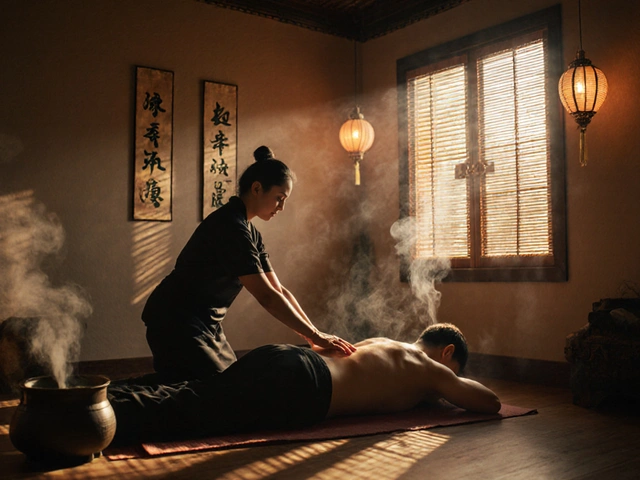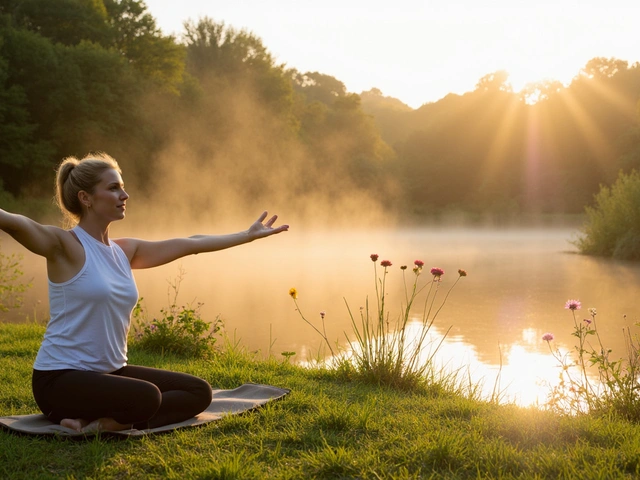Ever left a massage wishing you’d asked for more time on that one sore spot? You’re not alone. Most folks don’t realize there’s a lot you can do to get more out of a body massage beyond just showing up. The right approach can turn a decent session into the recharge your body craves.
It starts with a little prep. What you do before, during, and after your appointment can seriously boost the results. Whether you’re dealing with tight shoulders or you just want to chill, knowing how to set yourself up for a great massage makes a difference. Simple tweaks—like arriving well-hydrated, being open with your therapist about what hurts, and getting there early so you’re not rushing—can make the whole thing way more worth it.
Stick around for straightforward tips, practical do’s and don’ts, and a breakdown of what you can really expect when the massage begins. This isn’t just about relaxation—this is about leaving the table feeling better than when you walked in. Ready to make your massage count?
- Understanding Body Massage and Its Benefits
- How to Prepare for Your Massage Appointment
- What Happens During Your Massage Session
- Booking and Safety Tips
Understanding Body Massage and Its Benefits
A body massage isn’t just about kicking back for an hour—it’s a legit way to tackle everyday aches, stress, or just get your body moving better. At its core, a massage is when a professional uses their hands, elbows, or even tools to press, rub, or manipulate muscles, skin, and even joints. This isn’t new; folks have been doing this for thousands of years, from ancient China to modern spas in New York.
Let’s talk about the real perks. Regular body massage sessions lower stress hormones, help manage pain, and loosen up tight muscles. It’s especially handy if you have a desk job or you work out a lot. In one study from the American Massage Therapy Association, about 72% of adults said they used massages for health reasons, like easing soreness or recovering from injuries.
Here’s what stands out about what body massage can do for you:
- Stress relief: Your cortisol (stress hormone) levels drop. You walk out feeling lighter—mentally and physically.
- Pain reduction: Massage helps with back pain, headaches, or even old sports injuries by boosting blood flow and easing muscle knots.
- Better movement: Stiff and creaky? Massage can improve your flexibility and help break up the tension that’s holding you back.
- Improved sleep: It’s not just about feeling relaxed. People often report deeper, better sleep after a good massage.
- Mood boost: Your body releases happy chemicals like endorphins and serotonin, which can lift your spirits naturally.
Here’s a quick look at how massage stacks up for different needs:
| Benefit | How Massage Helps | How Fast Results Show |
|---|---|---|
| Back Pain | Reduces muscle tension, improves flow | Often after 1-2 sessions |
| Stress | Lowers cortisol, increases relaxation | During and right after session |
| Sports Recovery | Loosens tight spots, speeds up recovery | With weekly visits |
| Sleep Quality | Promotes deep, restful sleep | Usually after first visit |
If you’re thinking it’s just a luxury, it’s not. Loads of folks now get body massage as part of their regular health routine, not just for the occasional treat-yourself moment. And with benefits for both body and mind, it actually gives you a lot of bang for your buck—no crystals or incense needed.
How to Prepare for Your Massage Appointment
Getting ready for your body massage session is almost as important as the massage itself. Most people don’t realize it, but a little bit of planning goes a long way. You’ll get more from your session if you know what steps to take both before and after you hit the table.
- Arrive early. Give yourself at least 10-15 minutes. Rushing in at the last second just keeps you tense, and that defeats the whole point. Early arrival also lets you fill out forms if it’s your first visit and gives you space to relax.
- Drink water. Hydrating before your massage actually helps your muscles loosen up and flushes out any toxins that get stirred up during the session. Think of it as fueling up your body for recovery.
- Skip the heavy meal. Eating a big meal just before your appointment can make you feel bloated and uncomfortable. Light snacks are fine—just don’t show up famished either, or rumbling stomach noises could keep you distracted.
- Shower if you can. Not just for hygiene (although your therapist will appreciate it), but because warm water helps your muscles to relax a bit ahead of time.
- Share your needs and boundaries. Don’t just lie down and hope for the best. Be upfront about any soreness, injuries, or places you want to avoid or focus on. Maybe you love a strong touch, or maybe you hate anyone touching your feet. Talk about it before you get started.
- Dress right. Most spas and studios offer robes, but wear comfy clothes. After the session, you’ll want something easy to slip on so you stay relaxed.
Here’s a quick look at some things that can throw off your session—plus what to do instead:
| Common Mistake | What to Do Instead |
|---|---|
| Showing up late | Arrive 10-15 minutes early |
| Forgetting to mention pain points | Tell your therapist before you start |
| Eating a heavy meal | Have a light snack or wait until after |
| Not hydrating | Drink water before and after |
Lastly, don’t wear any heavy lotions or perfumes to your appointment—they could mess with the massage oils and even trigger allergies for your therapist or the next client. Simple and clean works best. A little prep work turns your body massage into the real-deal recharge you’re after.

What Happens During Your Massage Session
Walking into your body massage appointment, you’ll usually be greeted by your therapist and shown to a comfy, private room. The therapist will ask what brings you in—maybe it’s stress, sore muscles, or just a need for some serious relaxation. Don’t hold back. The more honest you are about your aches, your day-to-day habits, or if you have any injuries, the better they can tailor the session to you.
Once you’ve talked through your needs, your therapist will step out so you can undress to your comfort level. Most people keep their underwear on, but it’s up to you. Lie on the table under a fresh sheet or towel. Only the area getting worked on will be uncovered—the rest stays draped, so you won’t feel exposed.
Massages usually start face-down, especially if you’re getting your back done first. The therapist will check the pressure, and this part’s important: Speak up if something feels off. Want them to go harder, lighter, or skip a ticklish spot? Say so! Good communication is the secret to walking away happy.
Typical steps during a massage session:
- Pressure check-in: Therapists often start with light pressure and check if you like it that way or want deeper work.
- Different techniques: Swedish, deep tissue, or even sports massage moves may be used, depending on your choice and what your muscles need.
- Movement and stretching: Sometimes they’ll stretch your arms or legs to loosen things up. If you’re not comfortable, just let them know.
- Silent time: It’s totally normal for massages to be quiet, but feel free to ask questions or chat if it helps you relax.
- Flipping over: About halfway through, you’ll be asked to turn over (with the sheet covering you).
Wondering how long it usually takes? Here’s a basic rundown:
| Massage Type | Average Duration |
|---|---|
| Full-Body | 60–90 minutes |
| Back, Neck, Shoulders | 30–45 minutes |
| Sports/Deep Tissue | 60–75 minutes |
At the end, your therapist will let you know the session’s over and step out so you have privacy to get dressed. Most people feel a mix of super chill and kind of “floaty” after, which is normal—your body’s just coming down from some intense relaxation. Don’t rush. Take your time getting up, drink some water, and ask any follow-up questions you have. If you booked your massage for mental health, athletic recovery, or just to treat yourself, knowing what to expect in the room makes it way easier to actually enjoy the benefits.
Booking and Safety Tips
Before you book your body massage appointment, there are a few details worth checking out so you’re not caught off guard. First up, make sure the place you’re visiting is a legit licensed service. A good rule of thumb? Look for clear proof of licensing on the spa’s website or reception desk. In the USA, massage therapists need certification in most states, and many post their license numbers right on the wall. If you don’t see this info, ask. A professional won’t mind.
Booking online is usually the fastest way, but if you have specific needs—like deep tissue work or a certain therapist—it’s better to call. This way you can ask about the therapist’s experience, specialties, and availability. Don’t forget to confirm the price up front so there are no surprises when you check out. Weekend and evening appointments book up fastest, so if your schedule is tight, reserve at least three days ahead. Early birds can sometimes score a discount with a morning slot.
- Arrive 10–15 minutes early to fill out forms or get settled.
- If it’s your first visit, let them know about injuries, allergies, or if you’re pregnant.
- Leave valuables at home. You don’t need much more than comfortable clothes and an ID.
- Shower beforehand—this isn’t just about courtesy; it helps you relax and makes the session better for both you and the therapist.
When it comes to safety, speak up if anything feels off. Real pros want you to feel safe, respected, and comfortable. Don’t be shy letting the therapist know if a technique is too rough, too light, or uncomfortable. You’re the boss of your own experience. And yes, you can ask to stop if anything makes you uneasy—no need to explain or feel bad about it.
Here’s a quick glance at what professional massage places usually check for safety:
| Safety Checklist | What to Look For |
|---|---|
| Therapist Credentials | Posted certifications and licenses |
| Cleanliness | Fresh linens, clean tables, sanitizer available |
| Client Intake Forms | Questions about allergies, injuries, history |
| Transparent Pricing | Clear, upfront pricing info—no hidden fees |
| Professional Boundaries | Clear communication; no unprofessional behavior |
One last tip: If you feel sick (even with a simple cold), reschedule. Massages can push toxins through your lymphatic system, which isn’t what you want if you’re already under the weather. Most places are cool about rebooking if you give them a heads-up. All these steps mean you get the most out of your session—and keep things safe, smooth, and easy.








